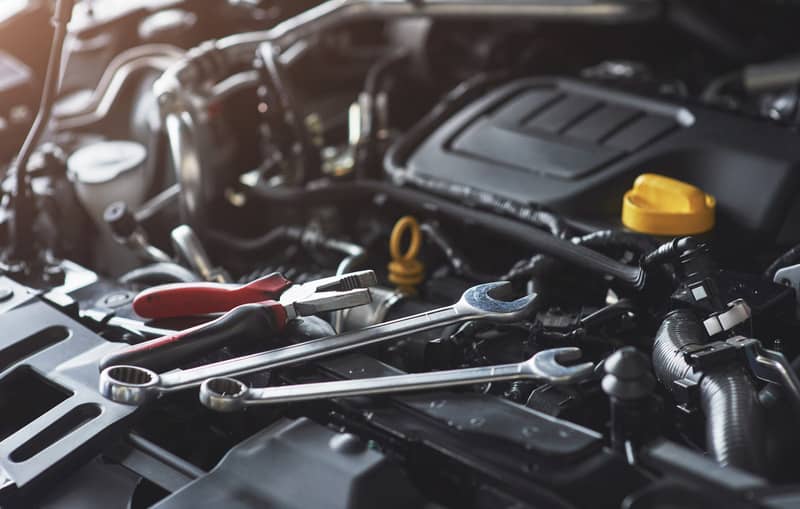Are you facing the dreaded scenario of a car that’s suddenly lost power and won’t restart? If so, it’s possible that your engine has jumped time. Jumping time occurs when the timing belt or chain slips out of alignment, disrupting the synchronization between the crankshaft and camshaft. This can cause catastrophic engine damage if not addressed promptly. Don’t panic! With the right tools and guidance, you can tackle this daunting task and revive your beloved automobile.

Image: drivinglife.net
Understanding the Anatomy of a Timing Belt or Chain
At the heart of your car’s engine is a precisely orchestrated dance between the crankshaft and camshaft. The timing belt or chain serves as the conductor of this harmonious operation, ensuring that the valves open and close at exactly the right moments. When the belt or chain jumps time, this delicate dance is disrupted, potentially leading to catastrophic consequences.
Signs and Symptoms: Recognizing a Jumped Timing
- Sudden Loss of Power: If your car abruptly loses power while driving, it’s a telltale sign that something is amiss.
- Difficulty Starting: Your engine may struggle to start, or it may refuse to crank at all.
- Erratic Engine Noises: Unexplained grinding or rattling noises from the engine compartment can indicate a jumped timing.
- Check Engine Light: In some cases, your car’s check engine light may illuminate, signaling a potential timing issue.
Step-by-Step Guide: Fixing a Jumped Timing
Fixing a jumped timing is a complex procedure that requires mechanical expertise and specialized tools. If you’re not confident in your abilities, it’s always advisable to seek professional assistance. However, for determined DIY enthusiasts, the following steps offer a comprehensive guide:
- Gather Tools and Safety Gear: Assemble essential tools such as a wrench set, timing belt or chain kit, and protective gear like gloves and goggles.
- Safely Park and Disable the Car: Park your car on level ground, engage the parking brake, and disconnect the battery to prevent accidents.
- Remove the Timing Cover: Locate the timing cover and remove any bolts or fasteners holding it in place. Carefully remove the cover, exposing the timing belt or chain.
- Identify the Correct Timing Marks: Clean any debris from the gears and pulleys. Refer to your car’s repair manual or online resources to identify the alignment marks on the crankshaft and camshaft.
- Set the Timing Correctly: Carefully align the timing marks and adjust the tension of the timing belt or chain according to the manufacturer’s specifications. Tighten the bolts or fasteners to secure the timing components.
- Reinstall the Timing Cover: Place the timing cover back in its original position and tighten the bolts or fasteners securely to prevent oil leaks.
- Reconnect the Battery: Reconnect the battery and check if your car starts properly. If the repairs were successful, your engine should run smoothly and without unusual noises.

Image: www.youtube.com
Expert Insights: Tips and Tricks
- Use OEM Parts: Opt for genuine original equipment manufacturer (OEM) parts for timing belts or chains and related components to ensure optimal performance and reliability.
- Check for Underlying Causes: Address any underlying issues that may have caused the timing to jump, such as worn gears or clogged oil passages.
- Consider a Complete Tune-Up: If your timing belt or chain has jumped, it’s a good idea to perform a complete tune-up, including replacing spark plugs, filters, and other essential components.
- Seek Professional Help When Needed: If you encounter difficulties or have any doubts during the repair process, don’t hesitate to consult with a qualified mechanic.
How To Fix A Car That Jumped Time
Conclusion
Fixing a jumped timing is a challenging but ultimately rewarding task. By following the comprehensive guide outlined above and implementing the expert insights provided, you can empower yourself to tackle this daunting automotive problem. However, always prioritize safety precautions and do not attempt this repair if you lack the necessary skills or confidence. By restoring the harmony between your car’s crankshaft and camshaft, you can breathe new life into your engine and enjoy the satisfaction of a well-executed job.